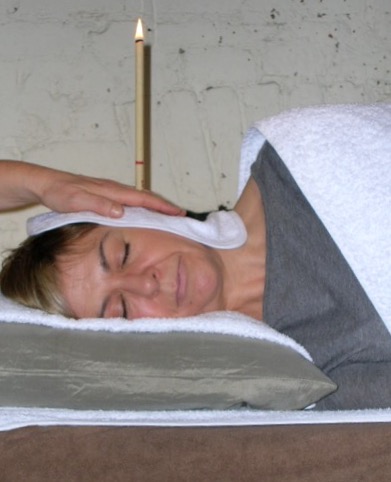About Ear Candling
Ear candles bring together fire, heat and scented smoke to promote healing and a sense of well-being. They have been used by many cultures and civilisations including Greeks, Egyptians and Romans, with roots reaching back to native tribes in North and South America, Asia and the Siberian Prairies.
What happens during an Ear Candling treatment?
Once a consultation form is completed and the treatment has been discussed, you will lie on your side, covered by a blanket for comfort, and with a purpose-made cotton treatment cloth placed around the ear and nearby areas.
The lighted ear candle is gently placed into the entrance of the outer ear and you may experience a gentle heat and a pleasant crackling sound. The rising air column inside the hollow candle creates a very mild suction action at the base, which helps to loosen compacted earwax.

At the same time, the beeswax
and other ingredients are vapourised, creating a massage-like effect around the
eardrum. Each candle will take about 10 minutes to burn to a safety marker
line, at which time it will be gently removed from the outer ear and safely
extinguished in water.
To enhance the relaxing benefits of this treatment, it is followed a Reiki treatment, bringing the session to a close after an hour.
Frequency of treatment will depend on a number of factors including the purpose of treatment, how you respond and the nature of your condition and general health. This can range from a one-off treatment, a monthly or weekly visit or even twice a week.
Contact Melanie to book an appointment.
Does ear candling suit everyone?
Please be aware that some conditions are contra-indicated and ear candling should not be considered in the following cases:
- Perforated or artificial ear drum
- Ear grommets or tubes are in place
- Cochlear implant
- Any current or recent ear infection, discharge, eczema or dermatitis in the outer ear
- Acute infectious diseases ie: flu, measles, mumps, etc
- High temperature or fever
- Heavy cold, coughing or sneezing
- Recent head or neck injury
- Recent ear surgery or medical care from which you have not been discharged
- Skin or scalp infections
- Under the influence or alcohol or drugs.